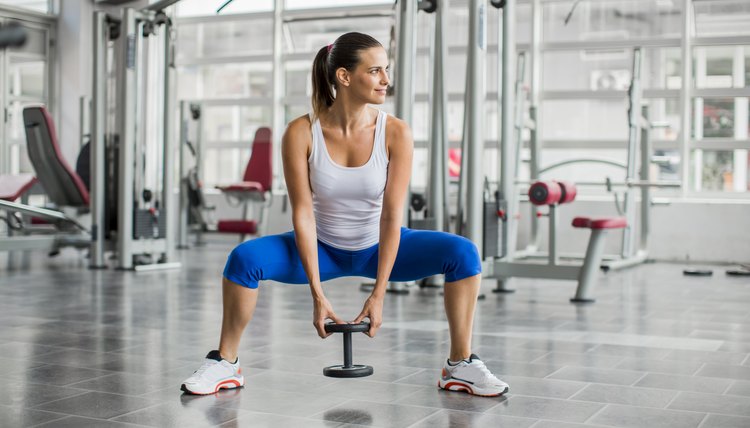What does fact checked mean?
At SportsRec, we strive to deliver objective content that is accurate and up-to-date. Our team periodically reviews articles in order to ensure content quality. The sources cited below consist of evidence from peer-reviewed journals, prominent medical organizations, academic associations, and government data.
The information contained on this site is for informational purposes only, and should not be used as a substitute for the advice of a professional health care provider. Please check with the appropriate physician regarding health questions and concerns. Although we strive to deliver accurate and up-to-date information, no guarantee to that effect is made.
Why Do High Repetitions Cause Muscle Definition?

A high number of reps and sets are often reflective of a strength training workout that’s designed to develop muscle size and definition. Building definition requires that your muscles handle a significant amount of workload, which in turn will stimulate the muscle-building process. After you’ve completed a high-repetition workout, give your muscles 48 to 72 hours of recovery time or you’ll limit your size increases.
Building Muscle Size
When your muscles get bigger and build definition, it’s due to your individual muscle fibers increasing in size. The fibers increase in size when they’re forced to handle workloads that they’re not normally used to. A larger workload causes the fibers to become overloaded and damaged, which in turn activates satellite cells, which are designed to help repair and build muscle tissue. In addition, your immune system is stimulated and begins the process of muscle healing.
The Right Reps
A high number of reps helps to provide enough of a workload to overload your muscles. Helen M. Binkley of the National Strength and Conditioning Association notes that six to 12 reps is adequate for stimulating muscle growth, while strength and conditioning specialist Lee E. Brown says sets for muscle-building can include up to 20 reps. Both professionals suggest at least three sets of each exercise.
Weight’s Impact
The number of reps alone isn’t the only component to an effective muscle-building workout. If you were to do 20 reps of every exercise with a weight that’s too light, you won’t adequately overload your tissues. Joseph A. Chromiak of the National Strength and Conditioning Association stresses the importance of completing each set to near failure or failure. This means you shouldn’t be able to complete more than 20 reps with the weight you’re using. If you can, it’s time to select a heavier weight.
Changing It Up
To keep your muscles from hitting a plateau, you should routinely change up the number of reps you’re performing of each exercise. You can follow a classic, linear periodization workout program, which involves progressively changing the reps and weight you’re using every two to four weeks. You can also use an undulated periodization program, which allows you to regularly increase and decrease the reps and weight you’re doing.
Other Factors
You'll see better definition improvements if you simultaneously follow a nutrient-dense, low-fat, high-protein eating plan. Consume a snack of lean protein and carbohydrates within 30 minutes after completing each workout and get 0.65 to 0.80 grams of protein for every pound you weigh each day. In addition, include both multi-joint and isolation exercises into your workout. Multi-joint exercises, such as squats and the bench press, are better for putting on mass, and isolation exercises help you increase definition.
References
- University of New Mexico Exercise Science: The Mystery of Skeletal Muscle Hypertrophy
- American Council on Exercise: What Exercises Should I Perform if I'm Trying to Gain Weight?
- University of New Mexico Exercise Science: Periodization: Latest Studies and Practical Applications
- Stoppani, J. (2015). Encyclopedia of Muscle & Strength (2nd ed., p. 14). Champaign, IL: Human Kinetics.
Writer Bio
Kim Nunley has been screenwriting and working as an online health and fitness writer since 2005. She’s had multiple short screenplays produced and her feature scripts have placed at the Austin Film Festival. Prior to writing full-time, she worked as a strength coach, athletic coach and college instructor. She holds a master's degree in kinesiology from California State University, Fullerton.
